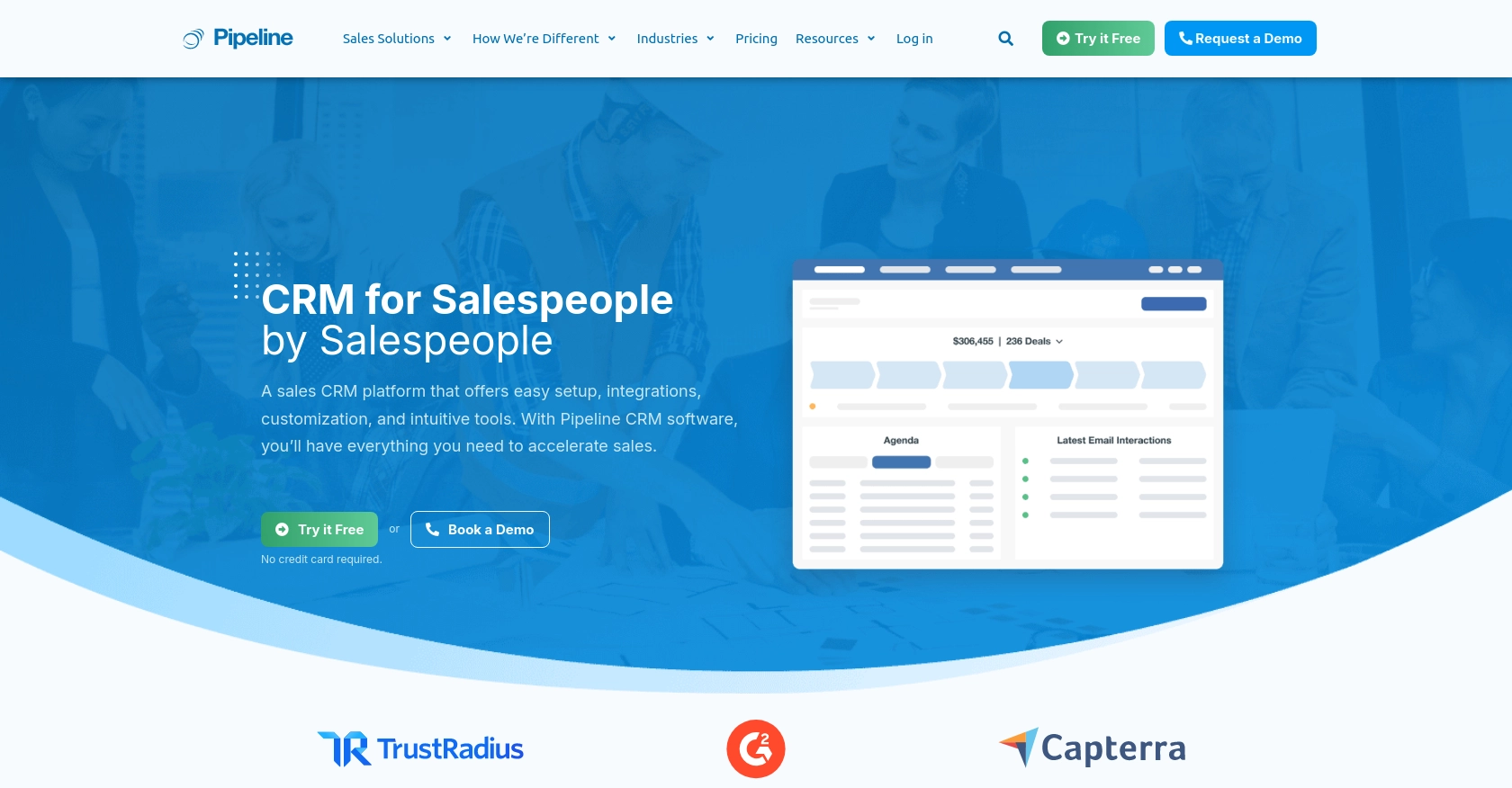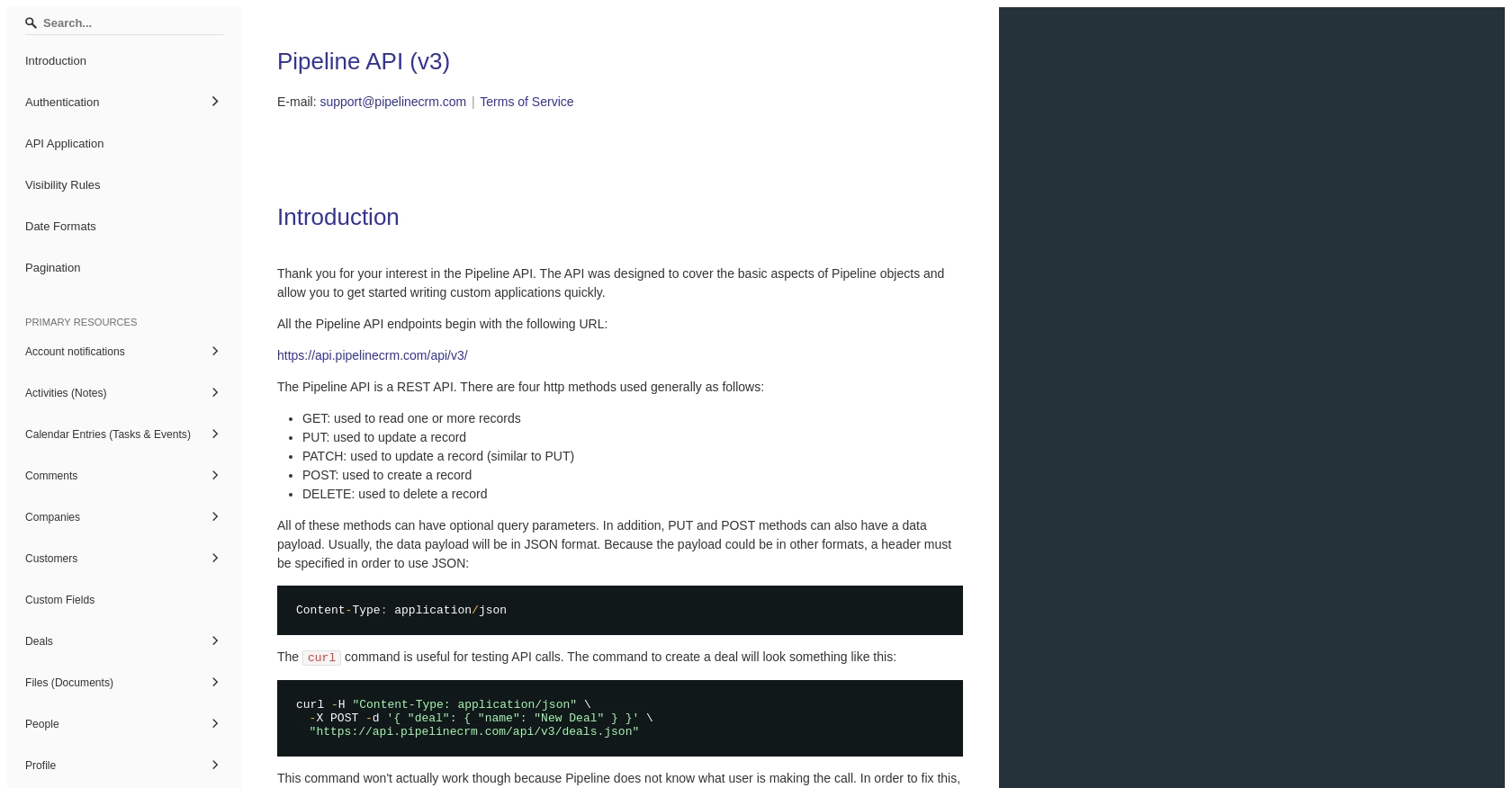Using the PipelineCRM API to Create or Update People (with Python examples)

Introduction to PipelineCRM
PipelineCRM is a robust customer relationship management platform designed to help businesses manage their sales processes more effectively. With features like contact management, sales tracking, and reporting, PipelineCRM provides a comprehensive solution for sales teams looking to streamline their workflows and improve customer interactions.
Integrating with the PipelineCRM API allows developers to automate and enhance CRM functionalities, such as creating or updating contact information. For example, a developer might use the PipelineCRM API to automatically update customer details from an external data source, ensuring that the sales team always has access to the most current information.
Setting Up Your PipelineCRM Test Account
Before you can start integrating with the PipelineCRM API, you'll need to set up a test account. This will allow you to safely experiment with API calls without affecting live data.
Creating a PipelineCRM Account
If you don't already have a PipelineCRM account, you can sign up for a free trial on their website. This trial will give you access to the features needed to test API integrations.
- Visit the PipelineCRM website and click on the "Sign Up" button.
- Fill in the required information, such as your name, email, and company details.
- Follow the instructions to complete the registration process and log in to your new account.
Generating Your API Key for PipelineCRM
PipelineCRM uses API key-based authentication to authorize API requests. Follow these steps to generate your API key:
- Log in to your PipelineCRM account.
- Navigate to the "Settings" section from the main dashboard.
- Find the "API" or "Integrations" tab and click on it.
- Click on "Generate API Key" and copy the key provided. Store it securely, as you'll need it to authenticate your API requests.
For more detailed information, you can refer to the PipelineCRM API documentation.

sbb-itb-96038d7
Making API Calls to PipelineCRM with Python
To interact with the PipelineCRM API and perform operations like creating or updating people, you'll need to make HTTP requests using Python. This section will guide you through setting up your environment and executing API calls effectively.
Setting Up Your Python Environment for PipelineCRM API Integration
Before making API calls, ensure you have the necessary tools and libraries installed. You'll need Python and the requests library to handle HTTP requests.
- Ensure Python 3.x is installed on your machine. You can download it from the official Python website.
- Install the
requestslibrary using pip:
pip install requestsCreating or Updating People in PipelineCRM Using Python
With your environment set up, you can now create or update people in PipelineCRM. Below is a Python example demonstrating how to make these API calls.
import requests
# Define the API endpoint for creating or updating people
url = "https://api.pipelinecrm.com/api/v3/people"
# Set your API key
api_key = "Your_API_Key"
# Define the headers, including the API key for authentication
headers = {
"Content-Type": "application/json",
"Authorization": f"Bearer {api_key}"
}
# Define the person data to be created or updated
person_data = {
"first_name": "John",
"last_name": "Doe",
"email": "john.doe@example.com"
}
# Make a POST request to create or update the person
response = requests.post(url, json=person_data, headers=headers)
# Check if the request was successful
if response.status_code == 201:
print("Person created or updated successfully.")
else:
print(f"Failed to create or update person. Status code: {response.status_code}")
print("Response:", response.json())Replace Your_API_Key with the API key you generated from your PipelineCRM account. The above code sends a POST request to the PipelineCRM API to create or update a person's information. If successful, you'll receive a confirmation message.
Verifying API Call Success in PipelineCRM
After executing the API call, you can verify the success by checking the PipelineCRM dashboard. Navigate to the "People" section to see if the new or updated person appears in the list.
Handling Errors and Common Error Codes
When making API calls, it's crucial to handle potential errors. Common HTTP status codes you might encounter include:
- 400 Bad Request: The request was invalid. Check your data format and required fields.
- 401 Unauthorized: Authentication failed. Ensure your API key is correct.
- 404 Not Found: The endpoint URL is incorrect.
- 500 Internal Server Error: An error occurred on the server. Try again later.
For more detailed error handling, refer to the PipelineCRM API documentation.
Conclusion and Best Practices for Using PipelineCRM API
Integrating with the PipelineCRM API can significantly enhance your CRM capabilities by automating the creation and updating of contact information. By following the steps outlined in this article, you can efficiently manage your customer data and ensure your sales team has access to the most up-to-date information.
Best Practices for Secure and Efficient API Integration
- Secure API Key Storage: Always store your API keys securely, using environment variables or a secure vault, to prevent unauthorized access.
- Handle Rate Limiting: Be aware of any rate limits imposed by the API to avoid exceeding them. Implement retry logic with exponential backoff to handle rate limit errors gracefully.
- Data Standardization: Ensure that data fields are standardized before sending them to the API to maintain consistency and accuracy in your CRM.
- Error Handling: Implement robust error handling to manage different HTTP status codes and provide meaningful feedback to users or logs for debugging.
Streamline Your Integrations with Endgrate
While integrating with individual APIs like PipelineCRM can be powerful, managing multiple integrations can become complex and time-consuming. Endgrate offers a unified API solution that simplifies the integration process across various platforms.
By using Endgrate, you can save time and resources, allowing your team to focus on core product development. With a single API endpoint, you can manage multiple integrations efficiently, providing an intuitive experience for your customers.
Explore how Endgrate can transform your integration strategy by visiting Endgrate and discover the benefits of a streamlined integration approach.
Read More
Ready to get started?
